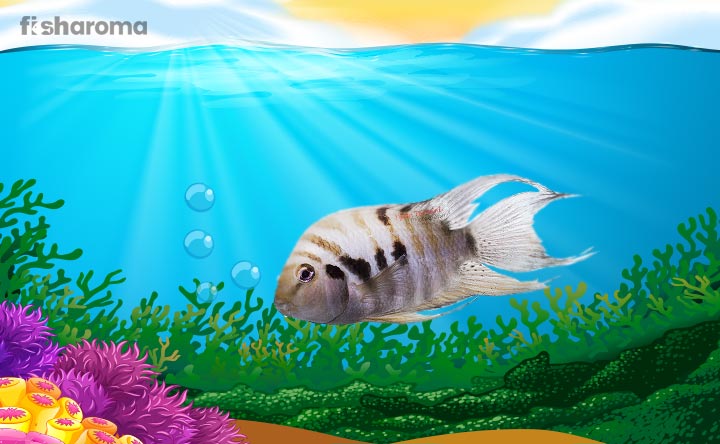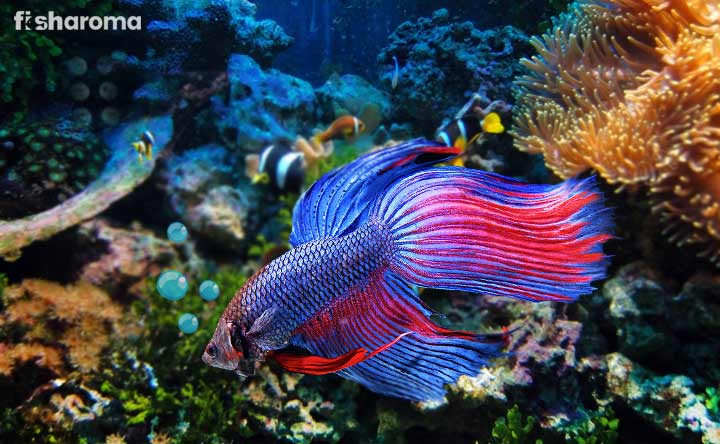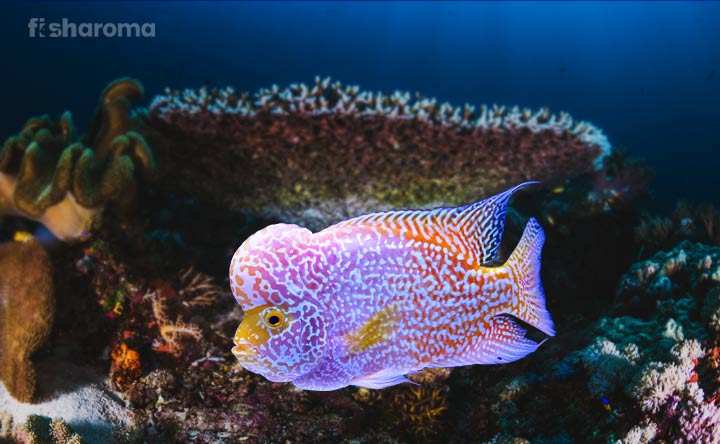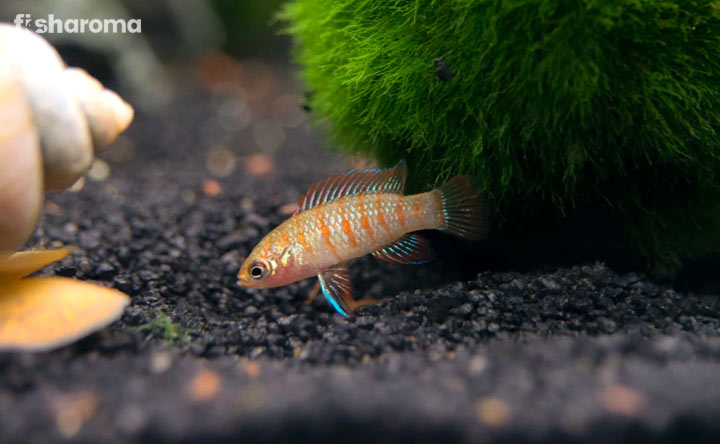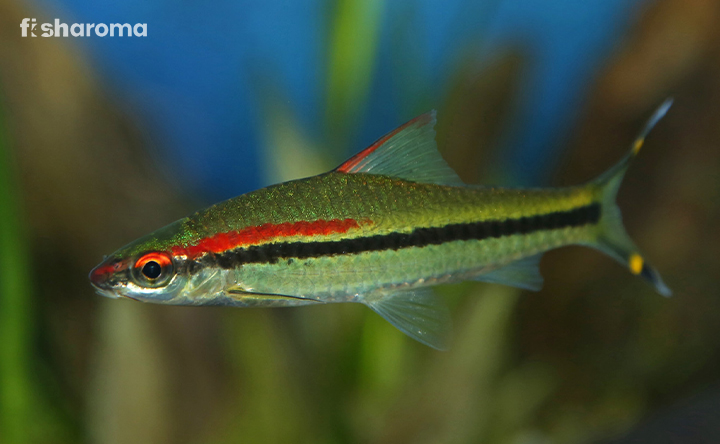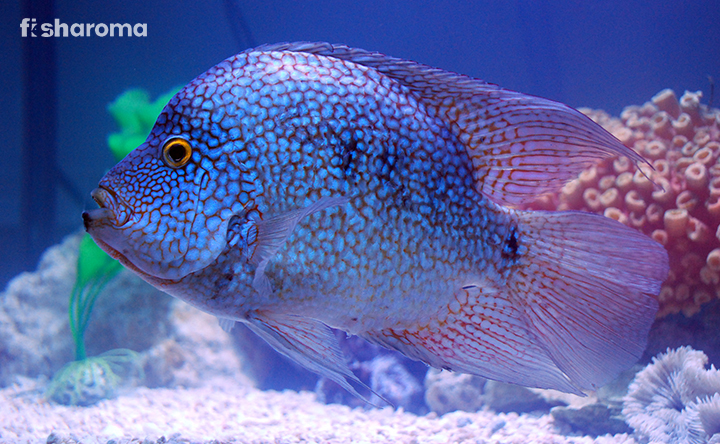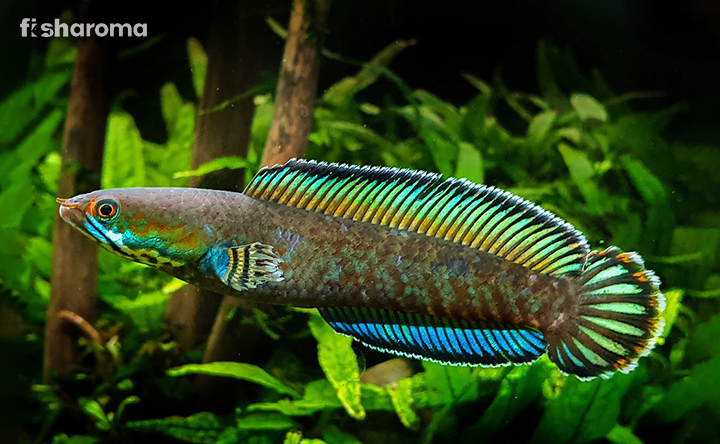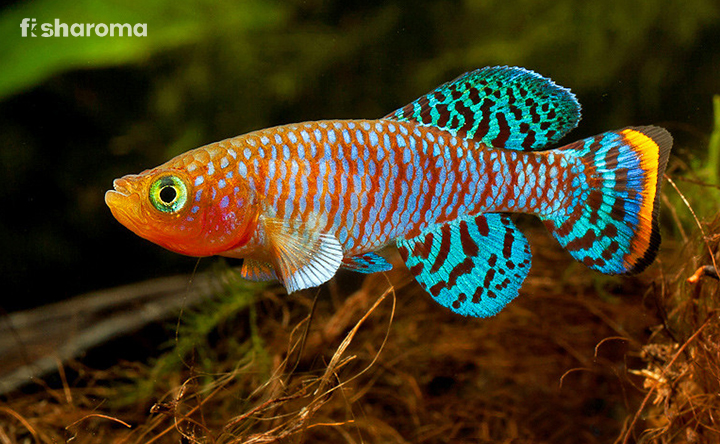Royal Pleco: A Descriptive Care Guide For The Regal Catfish
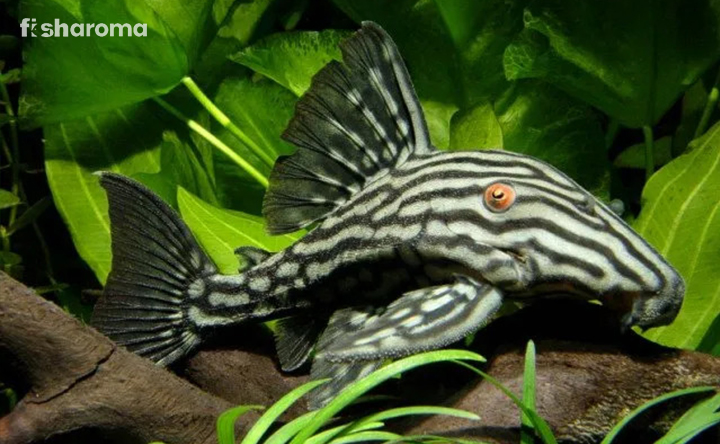
- Subspecies Of Royal Pleco And Distribution
- Origin And Habitat of Royal Pleco
- Appearance Of Royal Pleco
- Behaviour Of Royal Pleco
- Lifespan Of Royal Pleco
- Diet Of Royal Pleco
- Tank Requirements For Royal Pleco
- Water Type For Royal Pleco
- Compatibility Of Royal Pleco
- Breeding Of Royal Pleco
- Diseases And Treatments Of Royal Pleco
- Summary
Royal Plecos are bigger than most of the Plecos in the pet trade and for that reason, you will need a moderately big fish tank. These freshwater fishes are not at all prolific swimmers and like their other Pleco cousins, they are mostly bottom-dwellers. Their behaviour is similar to their other cousins which makes them cool options indeed. Just like their names, they are indeed royal in terms of their colouration. Knowing how to handle the fish is actually a must before buying this one, and that is where our article gains prominence.
The Royal Pleco is a pretty adjustable fish that doesn’t come up with higher maintenance. Still, when you are petting one, you need to ensure you are providing all types of water conditions that will make the fish comfortable enough to thrive. There are detailed studies on what the fishes might require in a home set-up accordingly. Read on to know about them in separate sections.
Key Specification Of Royal Pleco
The informative table consists of basic facts about Royal Plecos like their habitat, origin, other names, and breeding procedures.
| Also Known As | Royal Panaque and Royal Panaque Catfish |
| Origin | South America |
| Lifespan | Around 10 years |
| Colours | Dark tan coloured body with darker shades of stripes |
| Temperament | Peaceful |
| Size | Around 17 inches |
| Diet | Omnivorous |
| Reproduction | Egg laying |
| Maintenance Requirements | Easy |
| Tank Size | Around 120 gallon |
Overview
The Royal Pleco, a member of the Ancistrini tribe, is known as Panaque nigrolineatus scientifically. The common name of the fish refers to its subspecies as well. Comparatively a bigger one than other Catfishes, this armoured species has an extremely gentle disposition, with some fair exceptions at times. They are usually egg-laying species, but it doesn’t mean that you can witness the breeding at your home tank because that is indeed rare. Overall, if you have space at home, you can opt for a big tank and keep the fish along with other ones.
Subspecies Of Royal Pleco And Distribution
The fishes are actually a part of the Loricariidae family for which breeders often tag them with the letter L. There are certain numbers that follow the alphabet and it is to denote a particular type of subspecies.
The most common versions are L27, L190, L191, L330, L418, L90, and L203.
| Subspecies Name | Origin In The Wild |
| L27 | Xingu River and Toncantis River |
| L27A (Platinum Royal Pleco) | Brazil (Xingu River) |
| L27B (Gold Thunder/Thunder Line) | South American Countries |
| L27C (Thunder Line Pleco/Gold Line) | Rio Tapajos (Brazil) |
| L190 | Rion Orinoco (Venezuela and Columbia) |
| L191 (Full-Eyed Pleco/ White-Tailed Royal Pleco) | Caqueta and Meta River (Venezuela and Columbia) |
| L330 (Watermelon Royal Pleco/Spotted Royal Pleco) | Columbia |
| L418(Shampupa Pleco/Peruvian Green Royal Pleco | Peru |
| L90 (Papa Royal Pleco) | Peru |
| L203(Peruvian Black Royal Pleco/Volkswagen Pleco) | Peru |
Origin And Habitat Of Royal Pleco
The Royal Pleco is originally a South American species, with some of them having been introduced in some Asian countries like Hongkong, Singapore, and Malaysia. As far as its origin is concerned, the fish is native to Brazil, Venezuela, and Columbia. Their habitat includes the Xingu River and Orinoco River with the middle and lower regions of the Amazon River Basins. Some of the fishes are also from Peru.
Royal Plecos are fishes of freshwater regions where the tropical water changes its type during the rain. Such a situation induces their mating in the wild, otherwise, all they need is clean and steady water flow.
Appearance Of Royal Pleco
Since Royal Plecos have so many subspecies, their looks are different, in terms of patterns and sizes. These fishes have a proportionately bigger head than their body, which is why their appearance is seemingly strong and big.
Their mouth is also big and downturned, resembling the suckermouth type. These fishes don’t have scales at all, rather their body is covered with armour that is hard. That armour is there to protect their entire body. Despite that, their underbelly is quiet on the softer side.
Size
The average size of the Royal Pleco is 17 inches, but the subspecies of L203 which is alternatively known as Peruvian Black Royal Pleco is around 24 inches. The size is comparatively so bigger than other Plecos, that it is known as Volkswagen Pleco.
Colour
Depending on the species type, the Royal Pleco is mostly tan or grey coloured fish, with some dark stripes all over the body. Mostly it is the dark grey and brown or black stripes, sometimes the base colour doesn’t have stripes at all. It is actually very specific to each subspecies, but overall they are pretty identifiable when it comes to their patterns. The eye of the fish is crimson red so that the monotonous brown shades of the body get a contrasting tone.
The dorsal fin has a creamy colour pattern, hued in a golden shade, regardless of its stripes.
Behaviour Of Royal Pleco
The Royal Pleco is a gentle fish, like other Pleco types. It is usually found at the bottom of the tank, doing nothing most of the time. There is no sign of aggression if they are kept alone, but whenever you keep them in two or multiple, they will be territorial and hostile towards each other. Complying with the nature of the other Plecos, this is actually a nocturnal one. As far as activity is concerned, there is not much movement observed amongst them. This could be owing to their big head that restricts their movement due to heavy weight.
Lifespan Of Royal Pleco
The Royal Pleco can live for around 10 years, under optimal care and maintenance. This could however be longer in some specific subspecies, especially those that are found in and around Brazil.
The tank condition, sufficient space options, and their treatment during captivity affect their lifespan to a great extent. So, the better the situation, the more their lifespan is.
Diet Of Royal Pleco
These Plecos are mostly omnivorous, and they have a tendency to feed on wood, for which they have a perfect teeth sequence.
The driftwood or the bogwoods are good source of algae for the fishes because they enjoy algae very much.
Besides this, people are confused with ideal fish food options for their Plecos.
You can find other microorganisms and other food items in the woods as well. Apart from these, algae wafers, broccoli, zucchini, peas, and cucumber are also good. Pellets and flakes are practical options for the fishes.
Tank Requirements Of Royal Pleco
So far, we have known that it is a large Pleco so it needs a big tank, but is that all? Don’t they need anything more? Actually, they do, and that is why we are here. When it comes to tank requirements, it includes tank size, water type, decoration, substrate, and many more things that would ensure that your Pleco is getting all that it needs. So, without further ado, let’s start with the recommended tank size.
While you can experiment with the Royal Pleco tank decoration, there are several things that you can’t keep inside the tank. Go through the following sections regarding how to keep your tank ready for a Pleco.
Tank Size
The tank should be big enough to keep the fish, along with other fishes, because nobody keeps a solo Pleco in a tank unless that is the need of the hour. You have to ensure that the tank has at least 24 inches of diameter so that moving is never a concern for the fish. As far as the size of the tank is required, it should be 120-125 gallons. Without much space, this fish could get stressed and that would actually make the individual suffer.
Since their head is so bulky, they find it really difficult to turn and move, especially when it comes to dodging the corner of the tank. So, the suitable width of the tank is actually important.
Tank Lid
The fish might be jumping at times, although that is not an everyday affair but still you have to be careful. There are many foreign objects that could affect the water health of the fish tank. Those should be prevented on a regular basis and that is why the tank lid is important.
Substrate
We have already described that their underbelly is quite a soft area of their bodies, so something soft and smooth as the substrate would be good. This will ensure that they are not injured by the bottom decoration of the tank. It could be sand or even gravel that would suffice their need.
Filter
Since the tank that houses the fish mandatorily has driftwoods (as the fish food) the water is going to be polluted frequently. So, an efficient filter is required. Also, there will be waste produced by other fishes along with their leftover foods. It should be a combination of a powerhead and a strong filter at the same time so that the water remains clean as long as possible. The filter should also be able to create a strong and fast current, suitable for the fish.
Ornaments
All your fish would need is some driftwood. This is because not only do they offer shelter, but rather it is the source of wood and food, for the Plecos. You may have to keep the surface mostly uncluttered because the fish only roams at the bottoms only. If there are other fishes that could use some decorations for their mental growth and stimulation, you are free to do that, without compromising the Pleco space.
Lighting
The lighting of the tanks should always be soft, to the point that it fulfills two purposes. The first and foremost point is to make the entire tank visible for you and other onlookers and the fishes. Most freshwater fishes can’t tolerate harsh or extremely bright lights, so for that purpose, you can’t keep any types of strong lights.
Presence Of Flora
Plants should be deep-rooted so that they can act as a shade for the fishes, mostly from the lights. The fishes munch on such plants, so you have to keep them accordingly. Moreover, there are some aquatic freshwater plants that grow quite fast, You should avoid them because they will soon clutter the tank.
You should never keep artificial or synthetic plants because that will be detrimental for the fishes, as their digestive system is not built to process such synthetic materials.
Cleaning Method
You must keep the tank clean enough so that the fish could easily thrive. Weekly partial water change would make this happen. At the same time, you should also keep all sorts of uneaten, leftover food debris out of the tank at any cost. The gravel and the rocks can be cleaned after a certain time already.
Water Type For Royal Pleco
Since Royal Pleco is actually a freshwater species, it needs similar water conditions inside the tank. There should be no qualms about it and what else they will need is given in the following sections. These are scaleless fishes and that means they are prone to get affected by certain water changes and minerals. Keep the water condition at its best so that your fish enjoys the habitat.
Temperature
The water should be warm ranging from 22-26 Degrees Celsius. Any sudden and drastic change would be unbearable for the fish.
pH Level
The Royal Pleco is comfortable in neutral water and for that, you have to keep the pH level between 6.6-7.5.
Hardness
The carbonate hardness of the water should be 5-10 dKH. It is actually slightly hard in nature, so imitate that in your home fish tank.
Compatibility Of Royal Pleco
Royal Plecos are usually a timid species, but at times they can get aggressive. You have to keep the tank mates according to all of their moods and temperament. You don’t want to see them fight for their lives inside the tank.
Suitable Tank Mates
Fishes that are not going to clash with your Royal Pleco are ideal options as its tank mates. Since this Pleco is a bottom-dweller, it would be wise to skip other bottom-dweller fishes. Rather, those which stay mostly at the middle and the top are good choices. Also, choose some diurnal fishes, that wouldn’t disturb these Plecos, who are known to be nocturnal.
- Angelfish
- Congo Tetra
- Silver Dollar Fish
- Flag Cichlid
- Black Skirt Tetra
- Jaguar Cichlid
- Headstanders
- Rummy Nose Tetra
- Bloodfin Tetra
- Silver Arowana
The tank should be big enough to house different types of fishes together.
Unsuitable Tank Mates
Fin nippers, aggressive fishes, or even fellow Royal Plecos are harmful to any specific Pleco. They are not good with each other and territorial aggression is often the result of such poor matchmaking.
Breeding Of Royal Pleco
Breeding in captivity is not a matter of joke, because it doesn’t happen that often. Enthusiasts shouldn’t hope for this possibility because they need to make the pair for breeding and making a bond will happen when there are multiple of them together. You are not going to keep Royal Plecos together for that reason, because they are not good with each other as well. In the wild, it is their natural thing, but in captivity, the tank is too short to keep them together.
If you have an exceptionally large tank, you may try keeping some together, so that they can pick and choose their partners. If they choose to breed then as a result the female will lay eggs after a certain period. Again, it is not a common thing for home-bound tanks or aquariums. It is the duty of the expert breeders who can professionally arrange for many conditions that are simply impossible for normal aquarists. For that matter, the breeding Pleco pair is supposed to have highly nutritious food.
Diseases Of Royal Pleco
As a freshwater fish, the Royal Pleco can suffer from any fish disease that any other aquatic creature can be a victim of. There are certain protozoan, bacterial, and viral problems that usually bog down a Royal Pleco.
Fin rot is a common thing that negatively impacts the fish, and for that treatment, you must go to a vet.
Ich is a thing that occurs on the skin, but that is to be treated with copper medication, since this fish has copper sensitivity, you can’t follow that path in any way. So, make sure you are keeping the fish in a separate container and then making the water temperature slowly rise. However, before any such treatment, you should consult a professional.
To sum it up, it can be said that keeping the entire fish tank healthy, giving a proper diet, and choosing the right tank mates, all should be followed well. That is the reason why you should maintain basic hygiene so that your fish leads a healthy life.
Summary
The Royal Pleco is a large type of Catfish that is kept for its beauty. Honestly, nobody keeps it alone, because that would be pretty boring, because the fish doesn’t do anything. It graces one corner of your tank and that is it. So, keep some colourful companion fishes along with this and enjoy the tank. Also, breeding is not that easy for the species, but that doesn’t stop it from being a regal one. It requires an extremely low level of care, which makes it a viable pet option for fish enthusiasts.
Other Similar Care Guides
If this Royal Pleco has been able to captivate your heart, then read our other freshwater species.
- Rosy Red Minnow – This is a hardy fish that is mostly used as a feeder fish. They are not big and do not demand special attention, so they are the best in all regards.
- Pearlscale Goldfish – This is one of the variations of fancy Goldfish that people keep for their beauty. The entire body is covered with pearl-like small dots, beautifying their aura even a bit more.
- Koi Fish – There are many types of Koi Fishes and all of them are used for ornamental purposes. There are many shades of such fish which make them ideal tank options.

